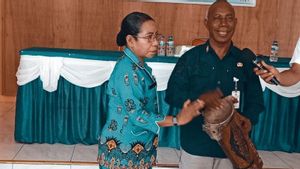JAKARTA - The Directorate General of IKP, Communications and Informatics and the Indonesian House of Representatives held a webinar with the theme "Digital Literacy Skills" on Tuesday, April 26. This Webinar event was filled by several speakers and presenters.
The event began with a speech by Mr. Maj. Gen. TNI. Mar, (Purn) Sturman Panjaitan as Member of Commission 1 DPR RI. He presented material on developing and data on the progress of internet users for digital literacy.
"Digital media is growing rapidly, digitally proficient using digital media, has digital literacy skills and a willingness to use the internet as needed. Indonesia must take advantage of its demographic bonus properly so that Digital Literacy Skills can be very useful," he said.
Digital Literacy Skills, he continued, are very influential today for rapidly developing technological advances. Digital literacy is also needed to increase the potential in schools, and utilize the current potential very well so that the community can cultivate its potential to be more useful.
"Digital Literacy can be very useful to fight hoaxes, with Digital Literacy people have more reliable information. Digital Literacy has become better in Indonesia," he said.
Followed by the second speaker, namely Niken Widiastuti as Special Staff of the Minister of Communication and Information of the Republic of Indonesia. He presented material on Digital Data in Indonesia with a population of 274.9 million people, with 202.2 million Internet users (73.7 percent), and 170 million active on Social Media (61.8 percent).
"The Digital World has a very positive and negative impact. The positive impact of the digital world is that the media becomes a place for exchanging data so that the media can become a center for information or data to get it. The negative impact of the internet world is that people will have an addiction to the internet and depend on the world Internet, then there is the threat of theft of personal data," he explained.
The most common threats to the internet are hoaxes. Therefore, the public must be able to fight hoaxes, especially on news fraud that is not necessarily true.
"The most common forms and channels for spreading hoaxes are writings 62.10 percent, pictures 37.50 percent, and videos 0.40 percent. Hoax distribution channels on radio media are 1.20 percent, email is 3.10 percent, print media is 5 percent. percent, television 8.70 percent, websites 34.90 percent, hoax spreaders can be charged under Article 28 paragraph 1 of the ITE Law with a threat of 6 years in prison or a maximum fine of Rp. 1 billion.
The English, Chinese, Japanese, Arabic, and French versions are automatically generated by the AI. So there may still be inaccuracies in translating, please always see Indonesian as our main language. (system supported by DigitalSiber.id)










